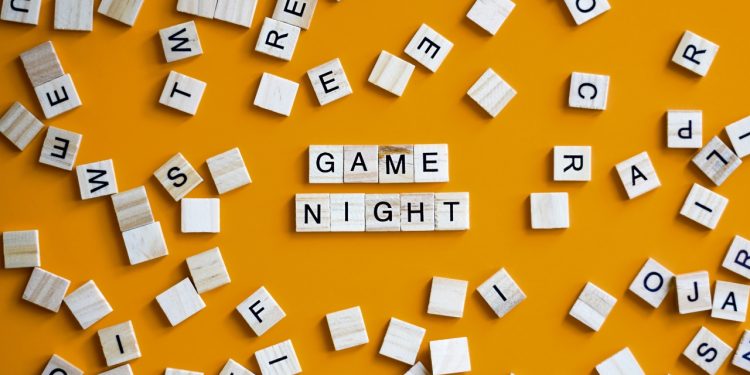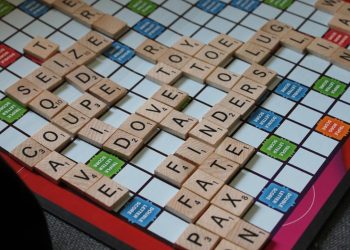Engaging in word puzzles online is often thought of as a calming and enjoyable experience. Behind the scenes, a lot goes into making these puzzles captivating from a developmental standpoint. It goes way beyond just putting rectangles filled with letters together in a random fashion. The best online word puzzles require creativity alongside programming, psychology, and user input. Let us take a closer look at how the most basic concepts transform into captivating word puzzles.
Step 1: Understanding the Target Audience
With each new game comes a new potential audience. The first step developers go through is to analyze whom they need to appeal to. Is it children with simpler gameplay alongside vibrant colors, or adults with robust vocabularies seeking a challenge? How the puzzle is framed depends entirely on the audience. The balance between the aesthetics and design also depends on this.
But this is not the first stage of the process. In fact, many developers turn to pre-existing games and gather as much feedback as they can get to be able to fill gaps in the market. With the abundance of word puzzles in today’s world, you would assume that players do not have much preference. Ironically, the opposite is the case. If developers take time to offer unique and complex word puzzles, they are guaranteed to never run out of clients.
Step 2: Conceptualizing the Puzzle Mechanics
Every word puzzle has underlying mechanics at its heart. At this stage, the designer’s imagination takes the leading role. In this phase, developers think out of the box and come up with concepts and theories on different ways players can interact with words. Could interaction take place in the form of a crossword puzzle? Or maybe in the form of a word search but with a twist? Or even something unheard of like forming words from letters that drop like in Tetris?
After deciding on the core mechanics, developers focus on ensuring that they are instinctive. The popularity of a game very often relies on how well it is able to explain its rules without bombarding players with too much information, which is something that must always be clearly managed. Everyone wants an introductory guide but a 20-minute tutorial is more advanced than most people could desire.
Step 3: Integrating Psychology into Gameplay
Why do certain games tend to capture the attention of players and hold on to it for long periods of time while other games are unceremoniously cast aside a few seconds after playing? The reasoning for the former question draws on psychology. To case study, developers rely on human behavioral principles to design rewarding feeling puzzles that retain the user. Some of these include:
- The Power of Progress: Psychologically, users earn motivation by starting on unambiguous goals. In this case Users take satisfaction in clearing one level before moving onto the next challenge.
- Rewards can be of any form with unforeseen pre-developed bonuses. These serve to spark curiosity and motivation. Inadvertently, goals that otherwise wouldn’t be part of the game are achieved along the way.
Increasing Difficulty: The best puzzles begin simple, but add on intricacies as players progress. This keeps players engaged without causing too much frustration.
Step 4: Generating Word Lists.
Every word puzzle lives or dies by its word list. Developers blend theme, difficulty, and vocabulary by making use of specialized dictionaries and language databases. But this stage is more complicated than simply looking up words in the dictionary. Developers need to think about:
- Relevance, a word should fit the theme of the game. For a nature puzzle, the words “forest”, “ocean”, and “breeze” would be very appropriate.
- Cultural Bias: Developers try to stay away from words that could be objectionable or have other meanings in different languages.
- Balance: Blend of short and long words add to the gaming experience and keeps it fresh.
Some game developers rely on algorithms to randomly generate puzzles, while at the same time making sure every possible solution can be reached. This ensures a level of complexity and limitless replayability.
Step 5: In this stage programmers devote themselves to making the game.
This is the fun part. The game is created when the developers start writing code in programming languages like Python, Javascript, or C#. In this stage the puzzle mechanics, the user interface, and the backend systems are coded. For instance,
Game Logic makes certain that there is a system for validating player inputs against the word list.
- Animations: Highlights visuals in the form of letters assembling or rewards being showcased.
- Scalability: Makes sure the game runs seamlessly across different platforms from mobile devices to desktop computers.
Step 6: Incorporating Visuals and Audio
What’s a great game without stunning graphics and sound? Developers work alongside graphic designers and sound engineers to simulate the most immersive experience. Puzzles come to life with bright colors, playful animations, and soft music in the background.
For instance, a “magical” word puzzle might have sparkling letters and a whimsical soundtrack, while a “minimalist” game may use gentle and plain sounds with clean outlines. These elements might look insignificant, but they change a lot in terms of emotions that gamers experience.
Step 7: Iteration and Playtesting
No game is perfect on the first attempt. Developers depend on playtesting, either conducted in-house or by real people, to determine what is working and what is not. Testers may argue that one level might be too easy or that the tutorial could use more clarity.
At this phase, feedback is crucial. Developers make adjustments to the game according to the responses provided by the players to achieve maximum enjoyment and polish.
Step 8: Launching and Marketing the Game
It’s finally time to launch the game and after all the hard work it should pay off. In most cases, the developers work with a marketing team that aids them in promoting the app in social media, influence marketing, and even addiction services. To entice new players, they may offer certain levels or challenging quests for free.
Developers are always actively tuning into player feedback and post launch reviews so that they can consistently add in new features such as puzzles, alterations, or fixes to maintain player interest so the game doesn’t go stale.
The Role of Passion and Innovation
An unparalleled blend of technology and art is used to give the joy of playing to people across the world, but at the end of it all, it’s the love for online word puzzles that fuels the fire. It’s hard to imagine what motivates the engineers and developers to push the limits but the best online word puzzles fuel that fire.
For the people that care about their work, every little detail is riddled with precision and creativity so if you are ever wondering what gives a puzzle that distinct touch, wonder no more.
Ready to Test Your Skills?
Knowing the effort put into the creation of word puzzles shows just how much love and care is poured into these games so we encourage you to try out Puzzle Jam. Come experience living proof of passion fused with skill waiting to be unraveled. You are not alone. Join the Puzzle Jam global community passionately striving towards becoming words enthusiasts. So grab your pencil and let’s jam!














